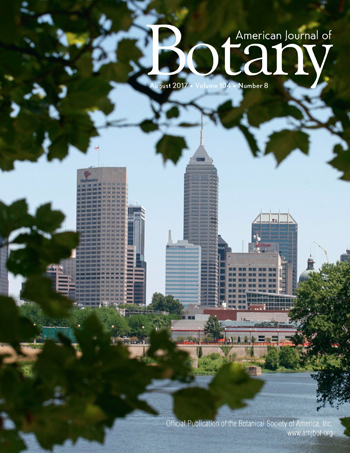Urban plant research featured on cover of August 2017 issue of American Journal of Botany
Urban vegetation provides important ecological services, but only certain plants can survive these harsh environments. Understanding how urban environments select for or against particular plant species would help in managing urban biodiversity, planning and executing sound ecological restoration, and predicting floristic responses to climate change. In a recent study, "Floristic response to urbanization: Filtering of the bioregional flora in Indianapolis, Indiana, USA" in American Journal of Botany, Rebecca Dolan, Friesner Herbarium, Butler University, Myla Aronson, Rutgers University, and Andrew Hipp, Morton Arboretum, investigate the historic, contemporary, and regional flora of Indianapolis, Indiana. Examining both life history traits of species and evolutionary relationships among species, they found that as the city of Indianapolis has developed, this urbanization process has resulted in a gain of non-native species pollinated by animals with a concurrent loss of both native species and also grass species that are pollinated by wind. Additionally, many species groups have been lost over time, resulting in a decrease in evolutionary distinct species. These results likely reflect the shift from agricultural cover to the built environment, coupled with the influence of horticultural plantings, in shaping the current urban flora of Indianapolis. These results also suggest that urban floras could become homogenized across regions, with concurrent loss of evolutionary information. The article can be found here.
August 2017



